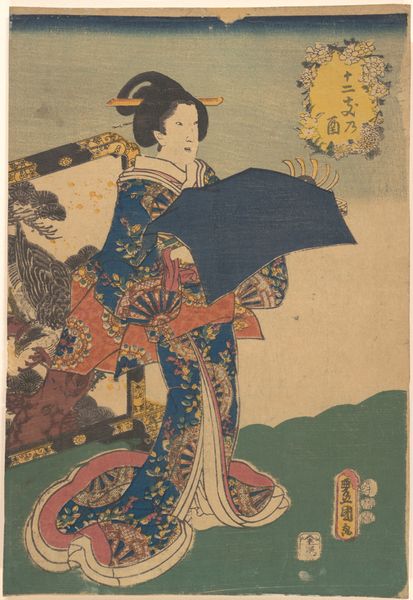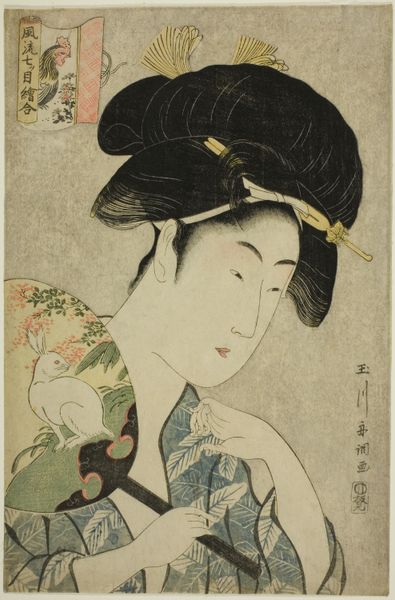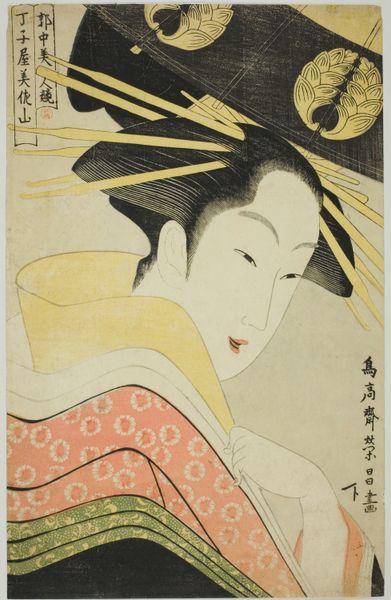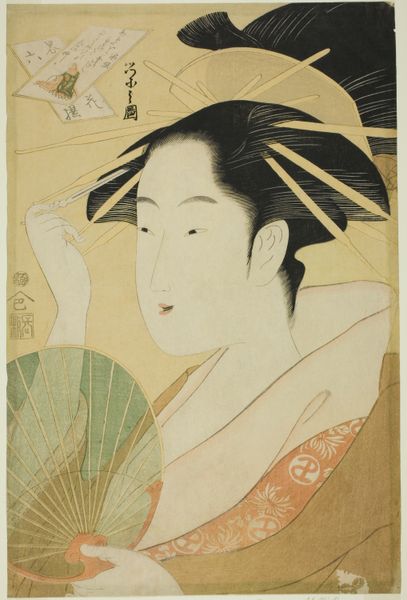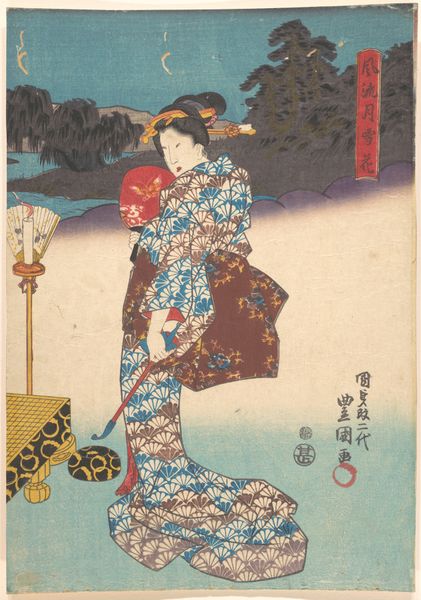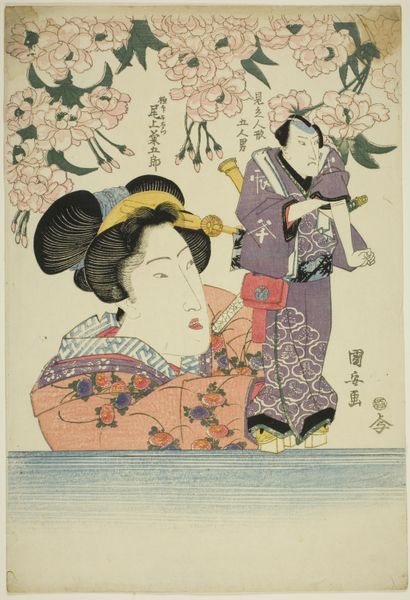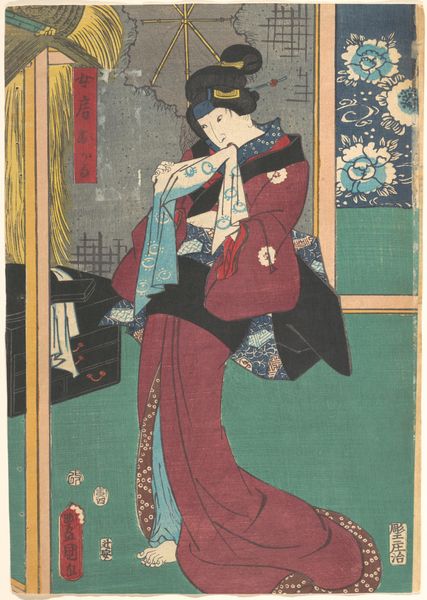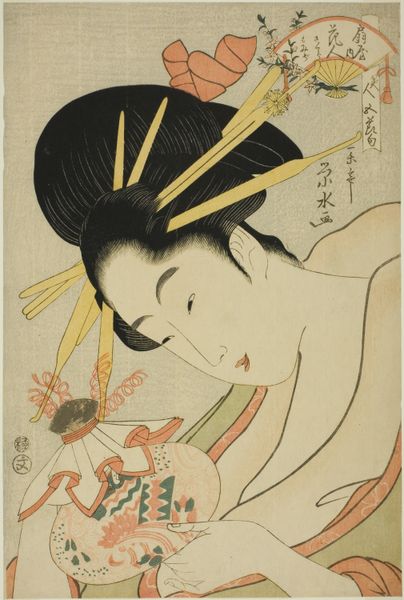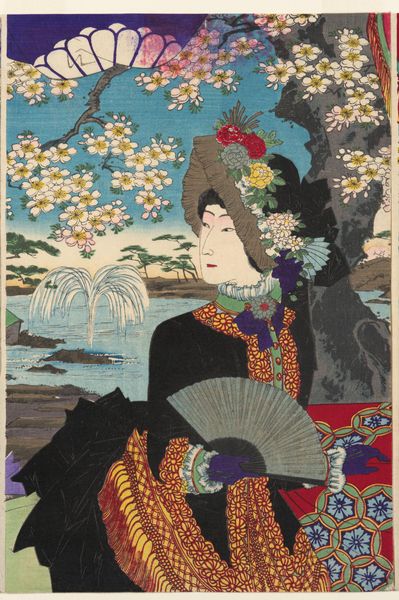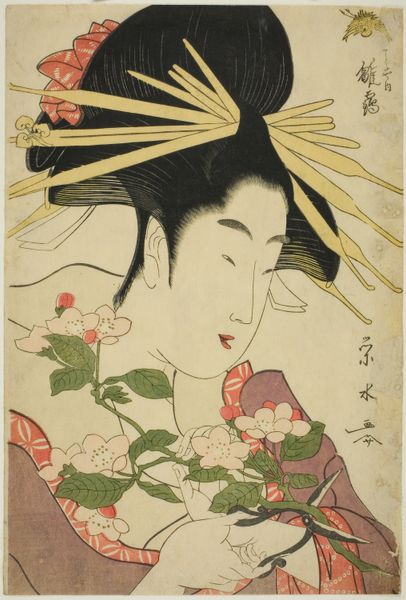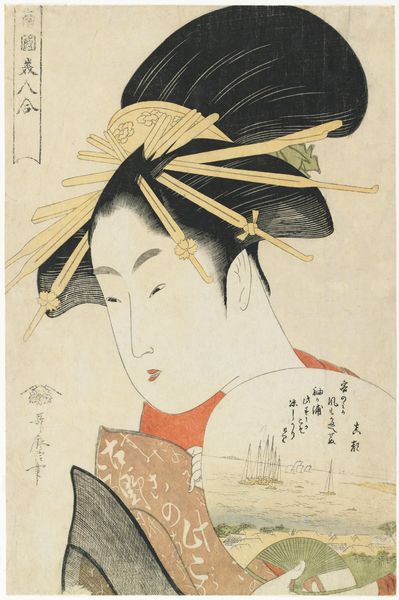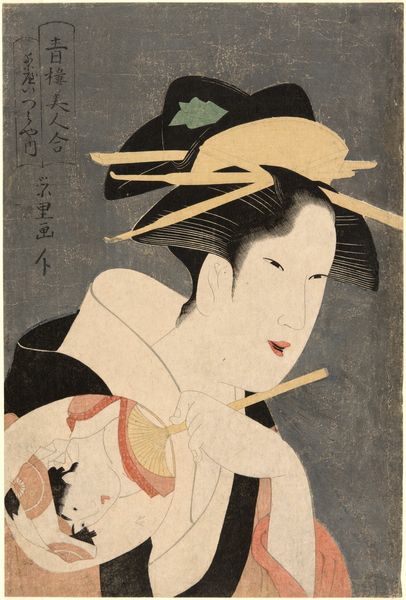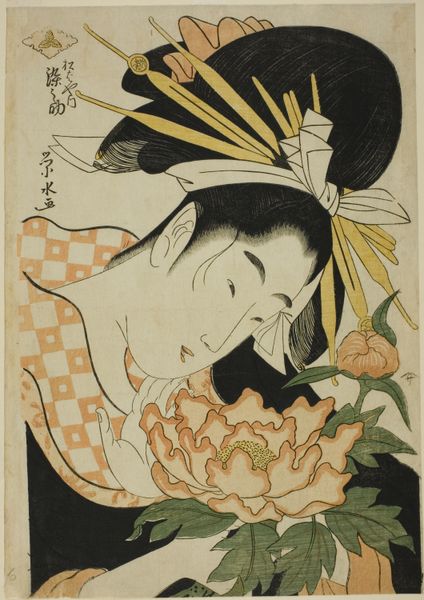
print, watercolor, woodblock-print
#
portrait
#
water colours
# print
#
asian-art
#
landscape
#
ukiyo-e
#
figuration
#
watercolor
#
woodblock-print
#
romanticism
Dimensions: 14 13/16 x 9 5/8in. (37.6 x 24.4cm)
Copyright: Public Domain
Editor: This is "Woman and Child Catching Fireflies," a woodblock print in the Ukiyo-e style by Eishōsai Chōki, made sometime between 1783 and 1803. It strikes me as very carefully arranged, a composition full of quiet observation. What visual elements stand out to you most prominently? Curator: The stark contrast between the dark background and the luminous fireflies immediately commands attention, doesn't it? Notice how the artist uses this contrast not just to depict the scene, but also to create depth. The eye is drawn upward, from the figures below to the light above, establishing a compositional hierarchy. Consider also the interplay of geometric and organic shapes – the fans, the lantern, juxtaposed with the irises and the natural forms of the figures themselves. It establishes visual tension. Editor: The fans seem like a crucial motif, creating these repeated circular patterns... What's their effect here? Curator: Precisely. They echo the fireflies, reflecting the light, drawing a clear relationship between the human artifice and natural phenomenon. This invites an interpretation around how nature and humanity interact within the image. Beyond the mere aesthetic pleasure in the repeating shape, consider the orientation of the two fans in how they help direct our vision in the piece. Editor: I see what you mean; the lower fan faces the figures while the top fan, larger, calls us back up to the fireflies in the black sky. It's so balanced. Is there anything else you notice with composition or technique? Curator: Consider the strategic placement of the irises, framing the scene and adding another layer of depth. They appear deliberately positioned to enhance the scene without overcrowding it. These elements support one another, don’t they? The limited color palette contributes to the mood, emphasizing form. Editor: This really alters my perspective of the arrangement and use of a full range of dark tones. Curator: Indeed, the mastery lies in creating a narrative purely through the strategic deployment of these compositional elements and not explicit social contextual clues. I find that inspiring.
Comments
No comments
Be the first to comment and join the conversation on the ultimate creative platform.
